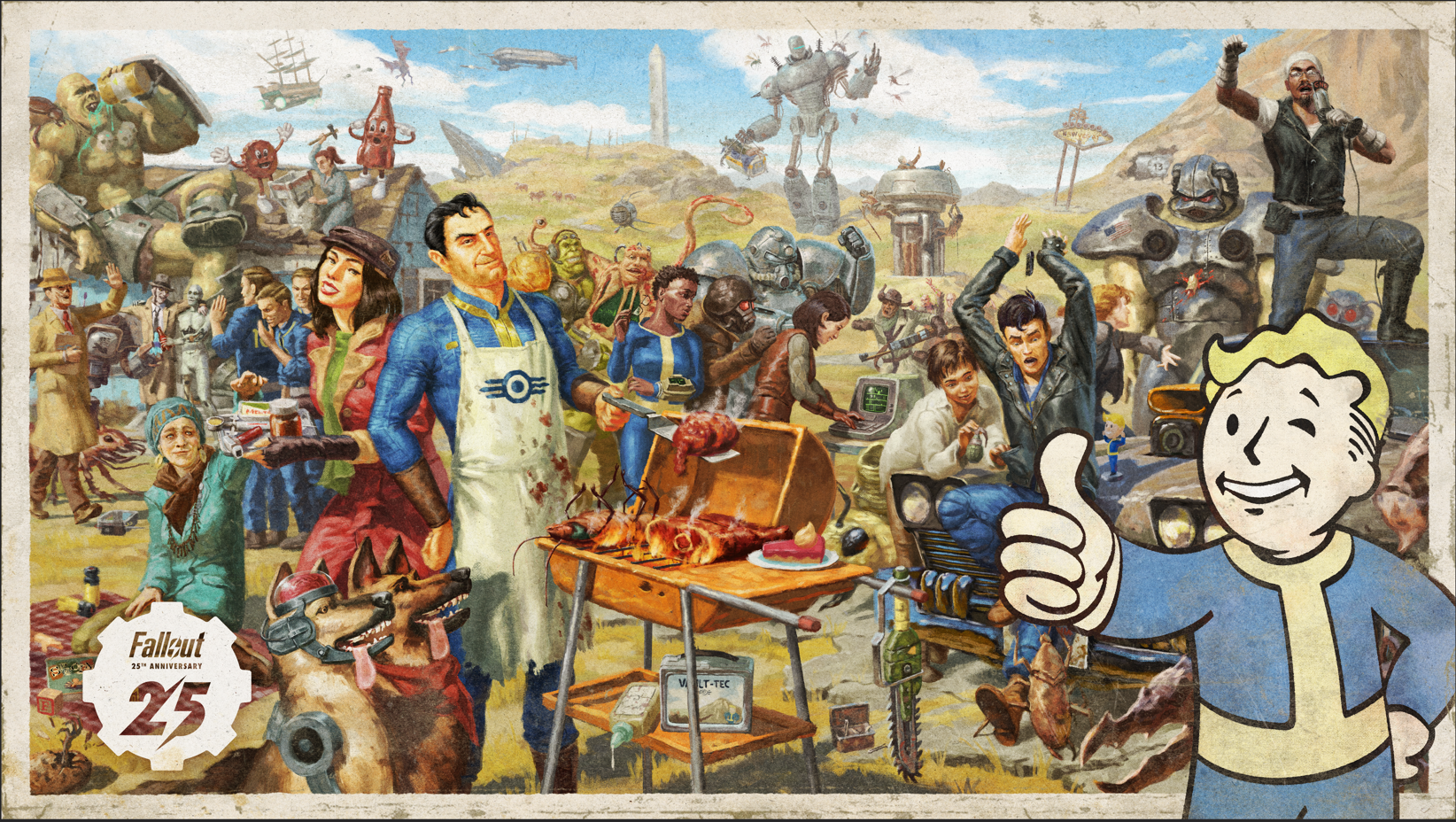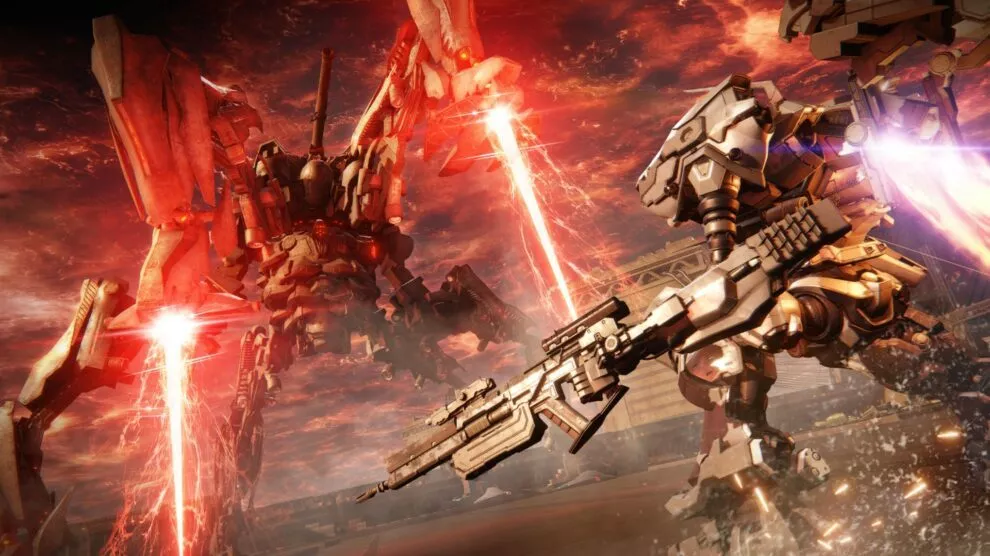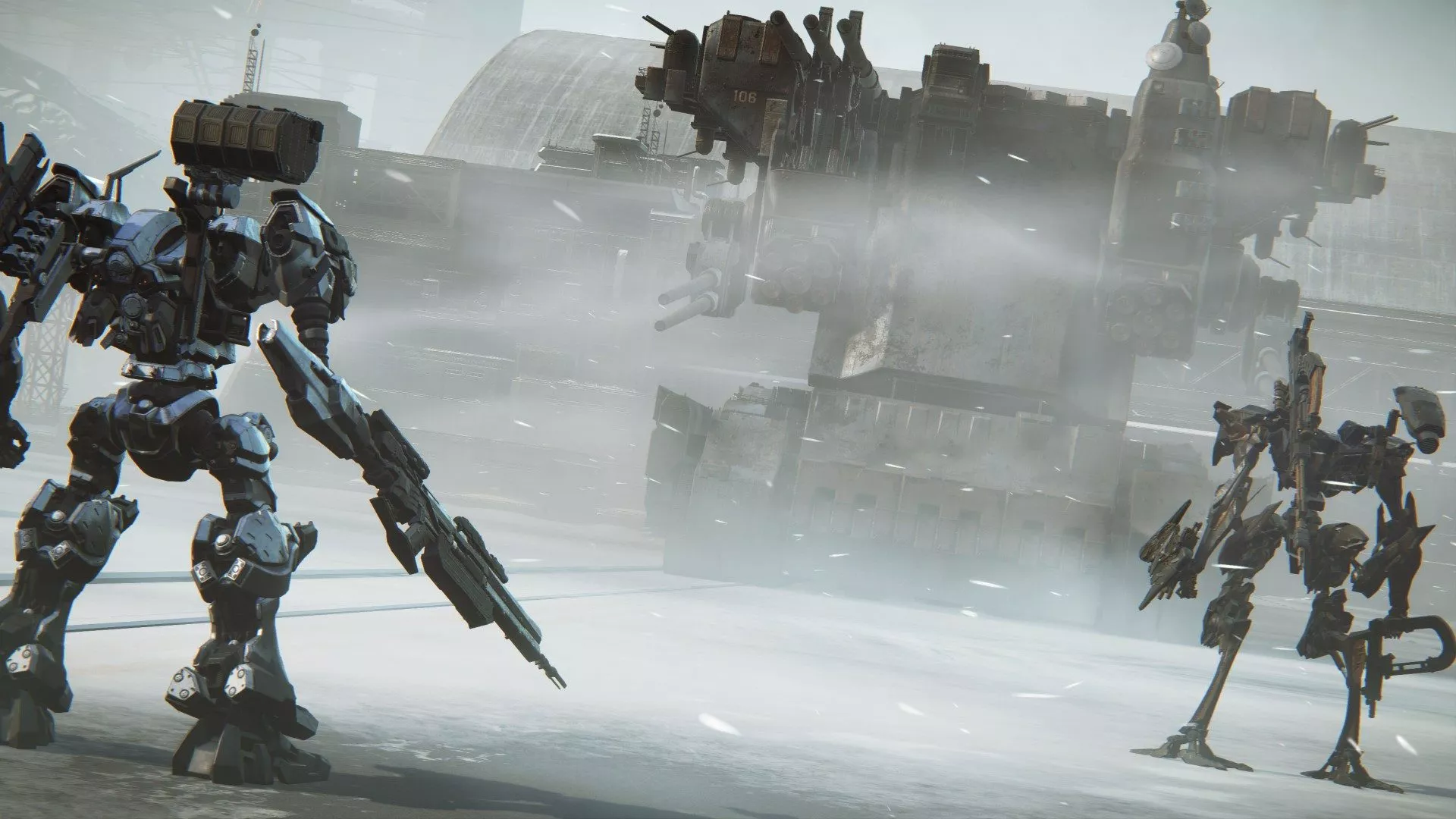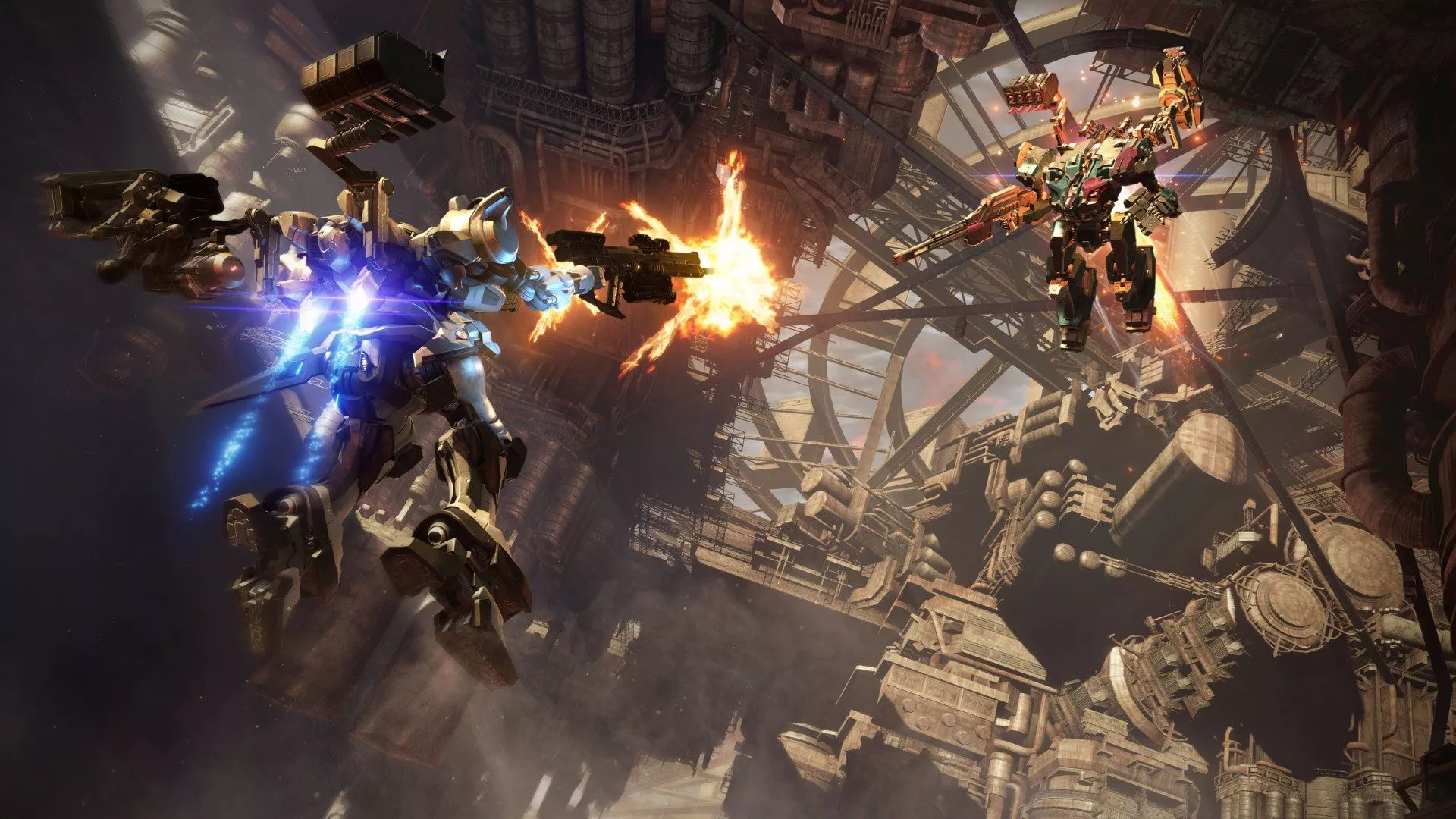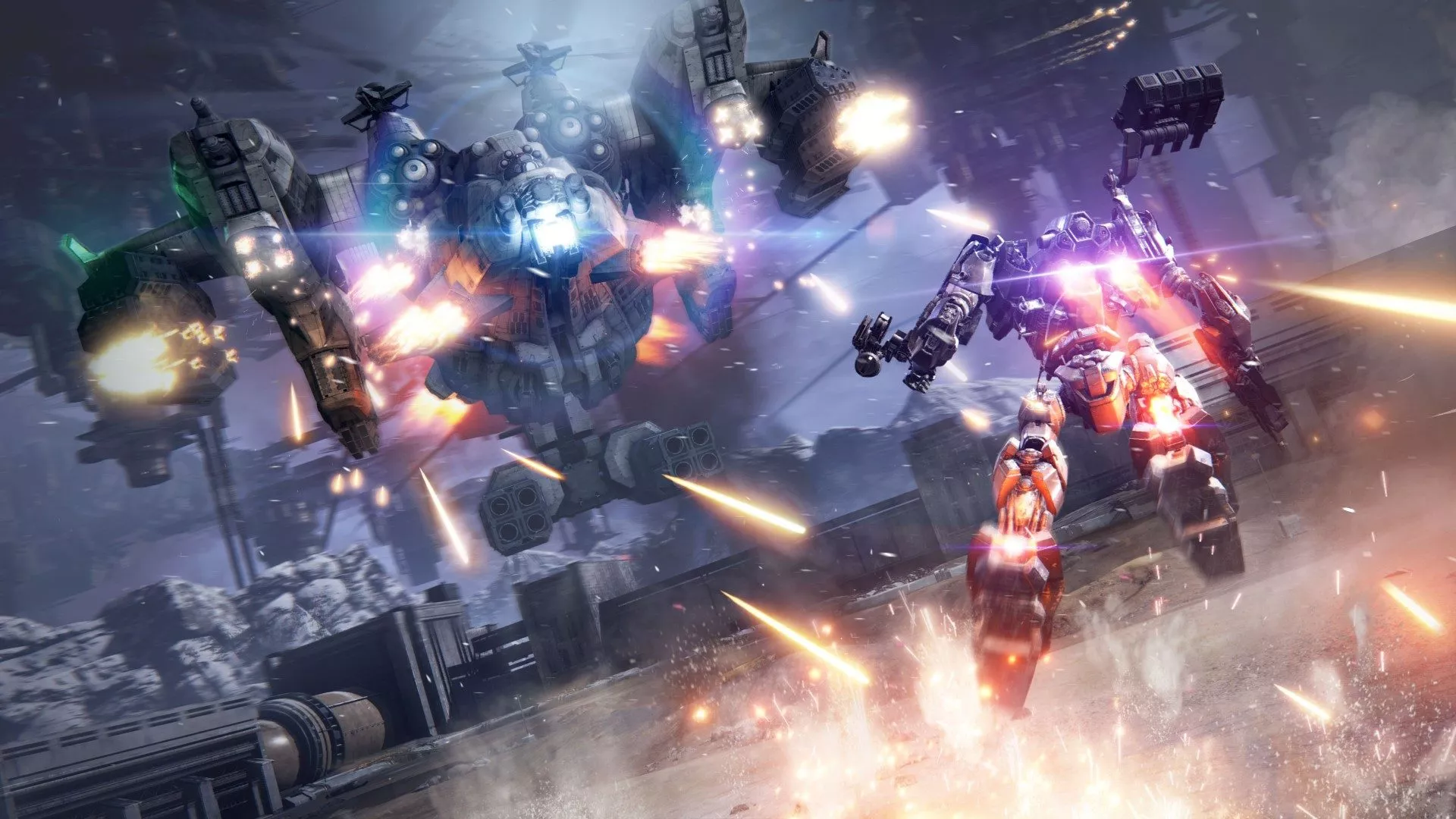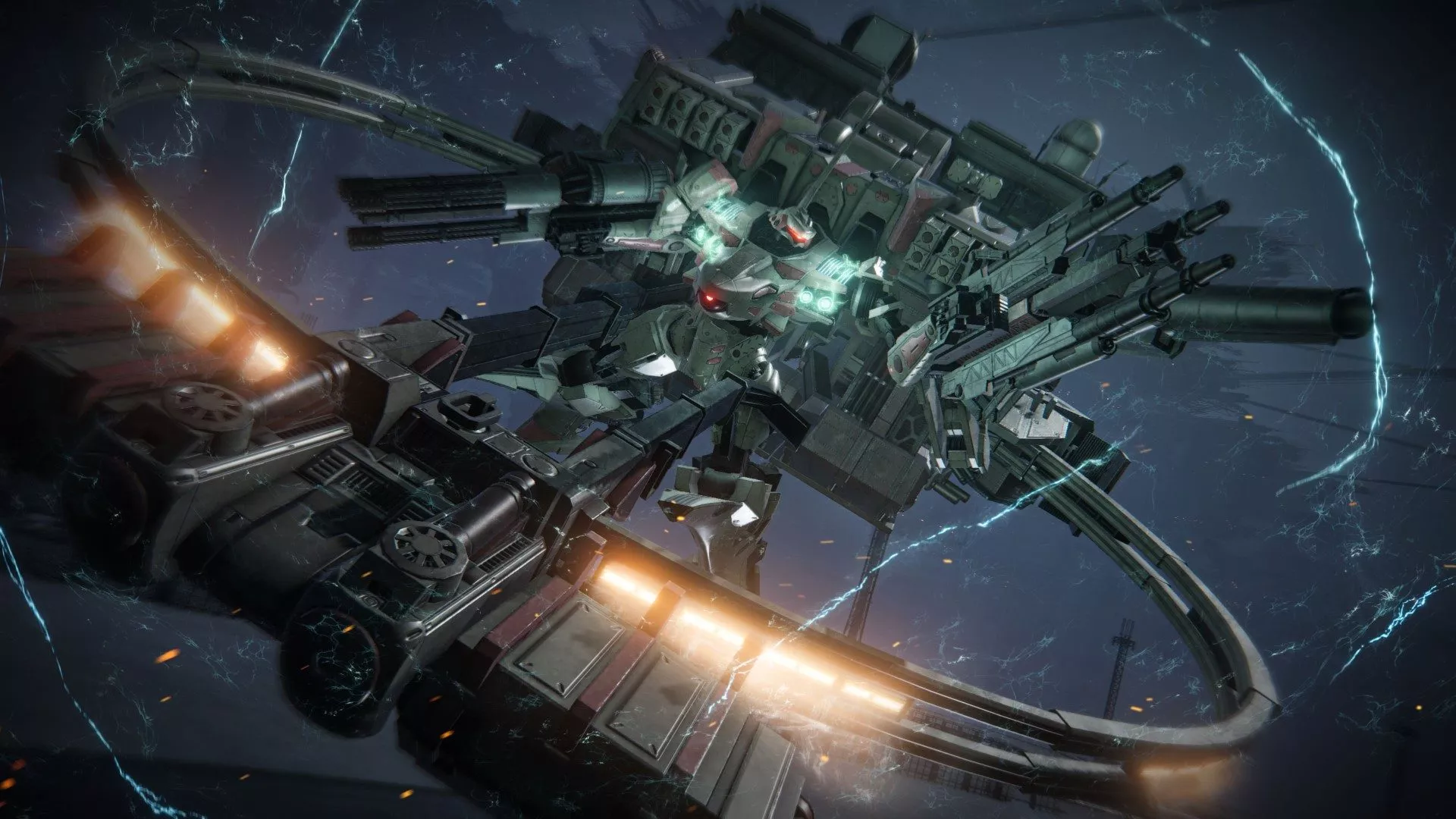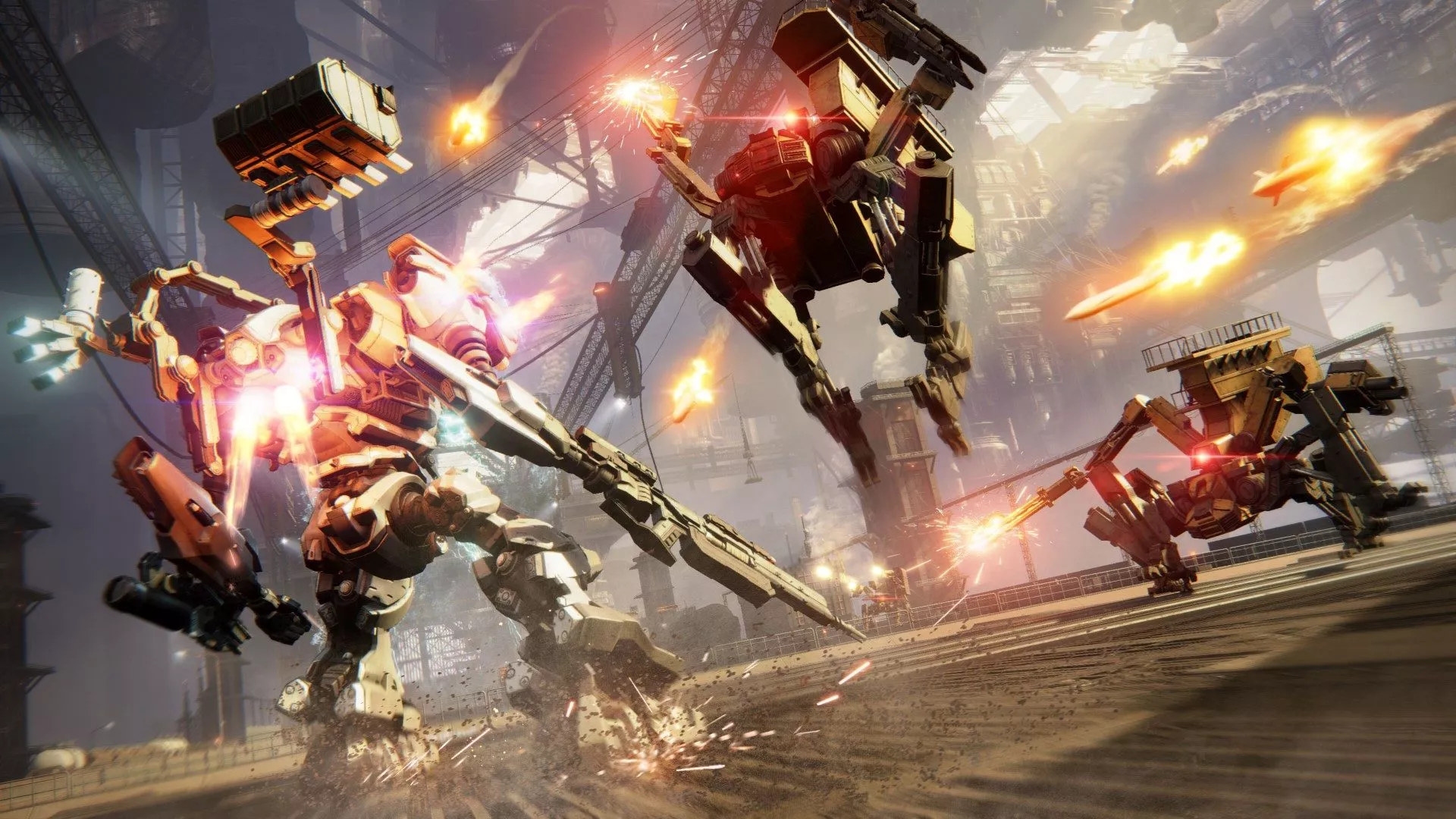The Raven from Rubicon.
If you grew up in Australia the 90s then, thanks to Cheez TV, chances are high that you fell into one of two main cartoon viewing camps: the superhero adjacent martial artists of Dragon Ball or the magical girls of Sailor Moon. While I was more of a mahou shoujo fan myself, there was a third option tucked away, later at night on SBS: Mobile Suit Gundam Wing.
Transforming teenagers and 5-episode long spirit bombs are all well and good, it was the shining brilliance of these 60-foot tall mechas that captured my imagination. It should be no surprise then that 25 years later I find myself parked squarely in a Gundam of my own design… well sort of. It’s not a Gundam, it’s an Armored Core, and this is Rubicon 3.
Armored Core 6 Fires of Rubicon takes place in a far-flung future where humanity has conquered the stars and developed an interstellar civilization of its own. Driving this development was a resource known as Coral – a shimmering red substance that empowered our journey to the stars. Humanity’s reliance on the Coral would soon blow up in its face – quite literally in fact – as all of it ignited in a cataclysmic event known as the Fires of Ibis. The Fires burned out all of the Coral and plunged humanity back into a dark age.
Blinding whiteness of the tundra
We pick the story up 50 years later. Landing on the planet of Rubicon 3 and known only by a number, we’re a nobody – an independent mercenary sent down to earn some COAM and a name for ourselves. Surviving here is no easy task though as several corporations and their subsidiaries vie for control of the surface and its rumoured remaining deposits of Coral.
Things are complicated further by the presence of the Space Government Force and their Planetary Closure Administration who are locking the place down from orbit. It’s not just the corps that have heard rumours of Coral on Rubicon 3 – the PCA have too and they’re intent on not letting anybody gain access to the valuable, and volatile, resource.
Once you’re safely on the surface it’s time to wade into the conflict proper. Missions will begin rolling in from the corporations and their AC pilots. Sometimes they want to use you for your skills, other times as no more than a distraction or cannon fodder, but that doesn’t matter as long as we get paid.
Honest work
Early on the majority of the enemies you encounter will be Generic Weapons (small AT-ST looking bipeds) or Light Muscle Tracers, or MTs for short. These guys are no match for an AC like yours and fall over easily. Eventually you’ll start running into Heavy MTs and even enemy ACs, and that’s when Armored Core gameplay really hits its stride.
Fighting these smaller, weaker enemies requires next to no braincells, but these bigger boys? They pack a punch. Taking them on requires tactics as you take to the air and quick boost left and right to dodge incoming fire. Gone is the slower, RPG like gameplay – replaced instead by a fast and frenetic three-dimensional battle.
The absolute peak of this hyperactive combat is the inevitable boss encounters. Ranging from attack helicopters right through to massive, armored tanks and enemy ACs, encounters suddenly become a bullet hell akin to a 3D Cuphead or Metal Slug. These super intense fights often don’t last long, but you’re fighting at 110% the whole time to balance keeping yourself alive with bringing down your foe.
Improvise, adapt, overcome
Should you fail to take down a boss or a particularly fearsome AC, and you will fail many times, and you’ll hit the other half of Armored Core’s gameplay loop: building your AC. The base idea of the Armored Core series is that you’ll eventually encounter a scenario that your current AC setup is poorly suited to. Whether you’re against a foe that’s resistant to kinetic weapons or just more vulnerable to energy damage, at some point or another you’re going to need to change things up.
Each AC is made up of 11 components, called parts. These include 4 main body pieces (Arms, Legs, Body and Head), your 4 weapon slots (arms and shoulders) as well as 3 additional component types – your generator, fire control system and boosters. There’s a frankly staggering number of parts available, and that’s before we even count the Core Expansion you’ll unlock much later on.
Chopping and changing between build ideas is initially a very confronting challenge, and arguably the biggest hill to climb for newcomers to the Armored Core series. The sheer number of stats that each part has is hard to keep track of and, quite frankly, very poorly communicated. When I first opened up the stat sheets I was completely lost. There’s no good glossary of terms and it’s not always clear just what will work together until you try it.
Eventually things will click though, and you’ll be able to start theorizing builds more effectively. By the end of Chapter 2, I was able to pretty quickly identify just how I was supposed to tackle a mission and then swap up my AC to better suit the task at hand. Having said that though, many people will undoubtedly bounce off the game and its difficulty long before then.
Sweet, sweet COAM
While it’s all well and good to spend time tweaking your AC, none of that means anything without the money to buy parts. Everything costs COAM, from the parts you buy through to the ammunition you consume on missions and the cost of repairing your battle damage.
Initially this slows you down quite a lot. Any changes you want to make to your AC will inevitably be restricted by what parts you can afford to cobble together. At first this will just be what ever scraps you can unlock and bolt on, but later you’ll be able to afford flashier and more specialized parts.
At a high level, your economy on Rubicon looks likes this: when you first venture out, you’re extremely limited on what you can afford. Poor performance or over reliance on kinetic weapons can really drain your money and hamper your ability to change things up to suit a scenario. Later though you’ll have enough to freely purchase parts and swap builds, but not enough to keep a parts bank on hand.
Eventually though you’ll be able to maintain a large array of parts to tweak your build with and streamline that build theory process. Having a deep bank to draw from lets you make better use of the Assembly option available when you fail a boss too – no longer will you need to go back to your hanger to change parts out, instead you can change them right there and dive straight back in at your checkpoint rather than starting all over again.
Endless waltz
AC 6 is a game of two distinctly different halves. On one hand we have the big brain stuff – the hours you can spend tweaking and changing out your AC parts, all while racking your brain to work out just how to build the mech you want without exceeding your EN and Weight restrictions. The other half is a frighteningly frenetic, intense action game that will have you on the edge of your seat for 5 full minutes of a boss fight. While From Software is better known these days for their Soulsborne games, nothing in those games really compares to the combat experience in Armored Core 6.
In some ways the mammoth success of Elden Ring last year will do AC6 a disservice. Many will see the FromSoftware logo emblazoned on it and jump in thinking they’re in for a similar experience, only to be shocked at what they find. Some will stick with it, but many will bounce off.
You see Armored Core is difficult in a different way to the EldenSoulsborne games. Many boss fights in those games feel like real brawls – extended punching matches between your skill and the mechanics of whatever you’re fighting. Few bosses in that series capture the speed and intensity of an AC fight. Where Elden Ring is accessible, Armored Core is just not. Sure, steps have been taken to make it more so than earlier instalments in the series, but ultimately Armored Core 6 just isn’t a game for everyone.
And that’s okay.
Instead, Armored Core 6 Fires of Rubicon is a step forward for the franchise. It’s more accessible than old games and does away with some systems that only served to frustrate. It’s a game with an interesting story, told awkwardly. Environments are often stunningly pretty, when not just barren tundra or sand swept desert. And holy hell, is it tough at times.
The AC series is one that rewards your ability to adapt and persevere in equal measure. To overcome it’s challenges you have to learn its systems and soldier on in the face of inevitable defeat. Series veterans will dine well, and if you’re signing up as a newcomer then do yourself a favour – don’t expect Armored Core 6 to be something it’s not. Try enjoying it for what it is instead.
Armored Core 6 Fires of Rubicon was reviewed using a promotional code on Windows PC via Steam, as provided by the publisher. Click here to learn more about Stevivor’s scoring scale.
This article may contain affiliate links, meaning we could earn a small commission if you click-through and make a purchase. Stevivor is an independent outlet and our journalism is in no way influenced by any advertiser or commercial initiative.


